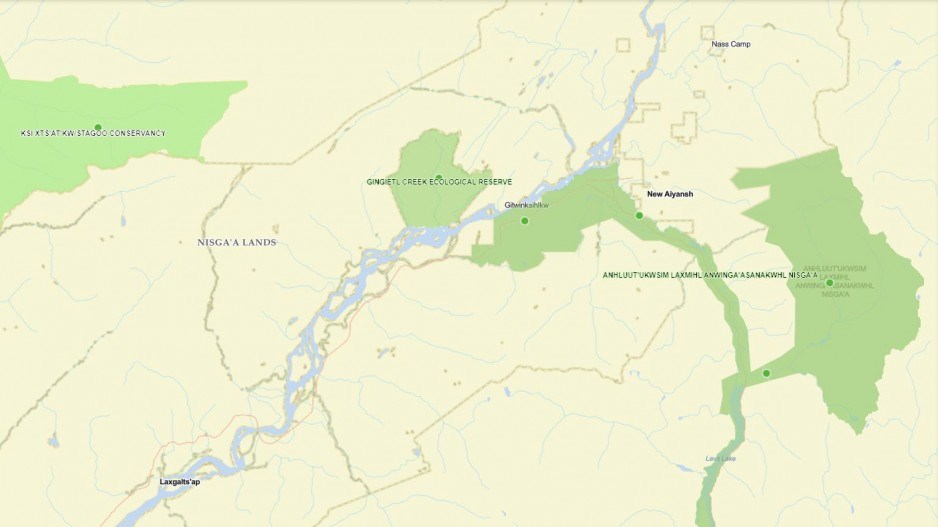The thorny issue of aboriginal rights overlap in the Nass Valley region will be the subject of rights and title claim by the Gitanyow First Nation later this year in October.
The Gitanyow are seeking legal recognition of rights and title on 6,200 square kilometres of land that includes the Nass Wildlife Area, an area to which the Nisga’a First Nation also have rights, as per the Nisga’a Treaty.
Nisga’a will not be included as a defendant in the case, however. On Thursday, Justice Michael Stephens ruled against the Nisga’a being included as a defendant in the case.
The Nisga’a assert that the Gitanyow’s claim will erode their treaty rights, and that they should therefore be added as defendants in the case. Stephens ruled that the B.C. and federal governments – who are the main defendants – can represent the interests of the Nisga’a in the Gitanyow claim.
“I have found that both of the defendants have the capacity and resources to lead the Nisga’a’s evidence at trial,” writes Justice Michael Stephens.
The Gitanyow’s claim is set to be heard over 84 days, starting in October, 2024.
The claim was first launched in 2003, and reactivated in 2016, Stephens noted in his recent ruling. The Gitanyow’s petition to the court has been modified a number of times and the most recent version is simplified.
For example, the Gitanyow have removed their request for the right “to ratify, or refuse to ratify, fee simple titles, tenures, or any rights or interests created by either Canada or British Columbia in relation to the Claim Area, such as those granted to other Aboriginal nations without the Gitanyow’s consent.”
The Nisga’a Treaty was implemented in 2000. It gave the Nisga’a outright title to certain lands. It also identified 16,000 square kilometres – the Nass Wildlife Area – as an area wherein Nisga’a have wildlife harvesting rights, but not title.
“The Nisga’a Treaty, which came into force in 2000, was negotiated without the participation and over the objections of the Gitanyow,” Gitanyow hereditary chiefs say in a press release.
“It includes a ‘Nass Wildlife Area,’ in which the Nisga’a have non-exclusive hunting rights, that overlaps with 84 per cent of the Gitanyow Lax’yip.”
“The evidence indicates that there is a relatively modest geographic overlap between the Claim Area and the Nisga’a Treaty lands where the Nisga’a hold fee simple title … and a more considerable overlap with the “Nass Wildlife Area” and “Nass Area” under the Nisga’a Treaty where the Nisga’a have harvesting and other rights,” Stephens notes in his recent decision to exclude the Nisga’a as defendants.
The Nisga’a treaty itself anticipates the possibility of overlapping claims by other First Nations arising at future dates, and includes remedies, should other First Nations succeed in competing rights and title claims.
For example, if another First Nation should succeed in a rights claim over land to which the Nisga’a also have rights, the treaty provides for options that either B.C. or the federal governments can provide the Nisga’a with “additional or replacement rights or other appropriate remedies.”
The feud over the Nass Wildlife Area has . In December, the Nisga’a filed for an injunction against Gitanyow members – referred to as “Raven Claw Outlaws” -- whom the Nisga’a say have been illegally occupying an area of the Nass Wilderness Area.
Named in that injunction application is Wilhelm Marsden, who is also one of the claimants in the Gitanyow rights claim, along with eight other Gitanyow members.



